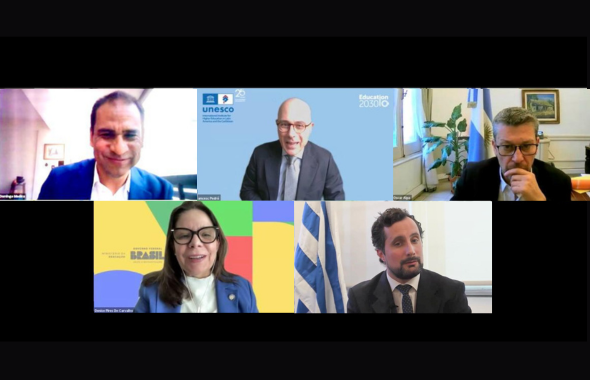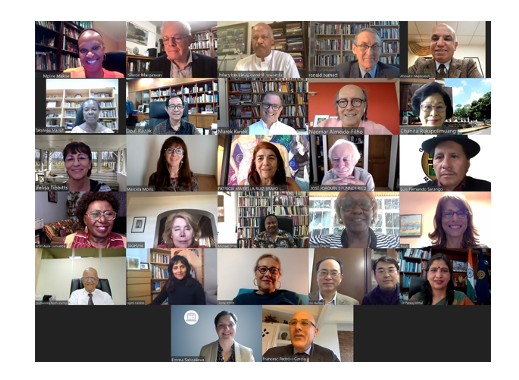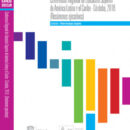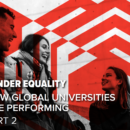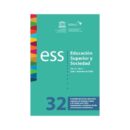Higher Education and Indigenous Peoples. Ethnic recognition as an institutional policy
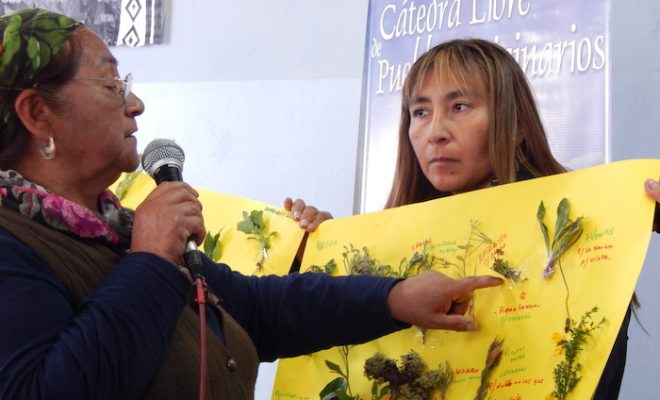
Higher education institutions (HEIs) have an enormous ethnic and cultural diversity within their educational communities. However, a large percentage of the indigenous population that attends these institutions is invisible.
The reasons for this are varied, among which we can mention: the absence of records and statistical data, the lack of application of current regulations on indigenous issues and the absence of cultural relevance in internal regulations and curricula.
Similarly, it is worth mentioning that most HEIs are legitimized on the basis of a Eurocentric matrix that excludes the knowledge, wisdom and practices of the indigenous peoples of the territories in which they are located.
In this text I will address an experience linked to institutional recognition within the National University of Patagonia San Juan Bosco (UNPSJB), located in the Argentinean Patagonia, an ancestral territory of the Mapuche people.
As stated at the beginning, one of the aspects that I consider central to reversing monocultural policies and practices in HEIs is ethnic recognition as an institutional policy and, in turn, the promotion of ethnic self-perception within the educational community.
The International Labour Organization (ILO) Convention No 169 on Indigenous and Tribal Peoples, which has been ratified by most countries in the region, states that ” awareness of their indigenous or tribal identity shall be regarded as a fundamental criterion for determining the groups to which the provisions of this Convention apply”.
The identity awareness of belonging to an indigenous people is very relevant, taking into account the deep and ongoing traces of historical colonialism and a narrative on the part of states that was built on the exclusion of the indigenous component in their national identities.
These identities were channeled through educational institutions, places par excellence of citizenship education, where not only was the knowledge of indigenous populations omitted, but their own history was deliberately distorted and forced integration into the new identities was practiced.
Ethnic self-perception and institutional recognition
Fostering the self-perception of the indigenous population within HEIs also implies a review and institutional recognition at the formal and symbolic level. It is important to make this condition explicit at the curricular level, in administrative and management tools (statutes, ordinances, regulations, study plans, etc.), as well as to make it visible through emblems and symbolism specific to indigenous peoples, as happened at the National University of Comahue (Argentina) where the Wenu Foye, the emblem of the Mapuche people, was hoisted.
Among the foundations of this act is the recognition of “the presence of the Mapuche Nation in the student body, in the teaching and non-teaching staff of the National University of Comahue, understanding and extending the Wiñoy Xipantv (celebration of the return of the sun) as an event that belongs to the entire population that today lives in the Wallmapu (ancestral territory of the Mapuche People)”.
These actions, which are not exempt from controversy and questioning from ultra-nationalist and indigenous genocide denialist sectors, imply an intercultural exercise: to give meaning to this term through concrete actions, to question the unique and homogenizing knowledge while inscribing it in an academic, intellectual and profoundly political project, which goes beyond the folkloric horizon.
An example of this is the educational approach of the Intercultural University of Indigenous Nationalities and Peoples Amawtay Wasi (Ecuador), which sets as a challenge the creation of “an educational strategy that contributes to the decolonization of society and thought, and that responds to the liberation struggles of the native nationalities and peoples, of Afro-descendants and of all popular sectors”. This demonstrates the institutional effort to be in tune with the demands of the people who live in the territory where the institution is located.
In the case of the UNPSJB, since 2018 the variable of ethnic self-perception has been incorporated in students entering the institution, with the aim of having statistics that allow us to know the student population, their educational trajectories, university experience and subsequent professional performance, among other aspects. The admission form asks about belonging to an indigenous or Afro-descendant people.
From 2018 to 2023, more than three thousand students have declared their ethnic affiliation to indigenous and Afro-descendant peoples, which represents around 12% of the total number of entrants each year.
These aspects were also addressed through a research project that made it possible to identify, through cartographic outputs, data analysis and interviews, the origins and trajectories through the various educational levels, the places of origin, the careers chosen and the projections of return to their places of origin once they have completed their studies.
Similarly, in 2021, this institution approved an Institutional Development Plan (PDI), which includes among its guidelines and in line with the Declaration of the Regional Conference on Higher Education (CRES 2018), the promotion of cultural diversity and interculturalism in equitable and mutually respectful conditions, as well as recognizing the epistemologies, modes of learning and institutional designs of indigenous peoples and other socio-culturally differentiated communities.
The incorporation of such guidelines implies a step forward in terms of adapting the internal regulations of a conventional university institution, that is, as Daniel Mato argues, those institutions “that have not been explicitly created and designed to respond to the needs, demands and proposals of communities, indigenous peoples or Afro-descendants”.
Administrative instruments
There is a wide range of institutional instruments that have emerged from deliberations and consensus in order to provide a rationale for the need to transform HEIs to make them culturally relevant.
One of these are the Regional Conferences on Higher Education (CRES) whose objectives reflect a constant process of study and reflection on higher education in Latin America and the Caribbean. The last of these, held in 2018 in the city of Cordoba, Argentina, established in its Final Declaration, among other aspects, that “HEIs have the legal, ethical, social and political obligation to apply the rights of indigenous and Afro-descendant peoples in an effective manner”, while “public and institutional policies of higher education must contribute proactively to dismantle all the mechanisms that generate racism, discrimination and all forms of intolerance that are still in force in Latin American societies”.
It also emphasizes that “education is not only a human right but also a right of peoples”, warning that there is still “an important historical debt owed by Latin American and Caribbean states and societies to indigenous and Afro-descendant peoples”, given that, “although their rights are recognized in numerous international instruments and in most national constitutions, there is an alarming deficit in the effective enjoyment of these rights, including in higher education”.
This Declaration and the previous ones made in Havana, Cuba (1996) and Cartagena de Indias, Colombia (2008), are extremely important as they constitute a guiding instrument for the strategic guidelines of the education sector, together with a Plan of Action with its respective roadmap, which allows the objectives to be anchored in concrete actions.
Similarly, the United Nations has proposed a Global Agenda for Sustainable Development with goals and targets to be met by 2030, including Sustainable Development Goal 4, which consists of “ensuring inclusive and equitable quality education and promoting lifelong learning opportunities for all”. And it is particularly important to highlight target 4.5 which states “eliminate gender disparities in education and ensure equal access to all levels of education and vocational training for vulnerable people, including persons with disabilities, indigenous peoples and children in vulnerable situations”.
Finally, I believe that the conditions are in place for HEIs to initiate or deepen institutional actions and policies on the recognition of ethnic and cultural diversity, incorporating it into their internal regulations. The normative instruments, briefly mentioned here, are available and fully in force.
Efforts to promote cultural and ethnic diversity among the educational community will not be sufficiently effective if the institutions themselves are not transformed to be coherent with the claims, demands and proposals of these groups. To this end, it is essential that HEIs recover the history of the subjects and territories in which they are inserted.
This also implies recognizing, questioning and transforming the colonial heritage that still permeates scientific and epistemological postulates and the way in which knowledge is legitimized.
This will make it possible to generate new starting points that have as their horizon the recognition of and respect for the human rights of indigenous populations, and educational institutions – once instruments of civilization – can make an enormous contribution to ensuring that this is equitable, of high quality and culturally and territorially relevant.
Author:
Daniel Leonidas Loncon
Pueblo Mapuche
Universidad Nacional de la Patagonia San Juan Bosco (UNPSJB)
RELATED ITEMS



